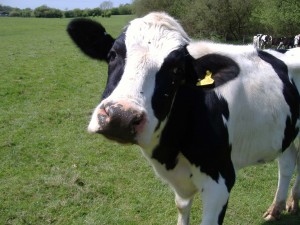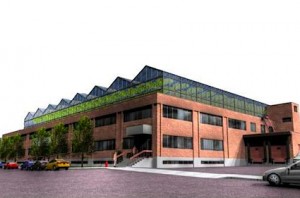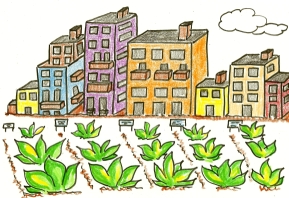I recently found a very interesting online presentation on the Urban Development Institute Kelowna website called The Urban Food Revolution: Changing the Way we Design Cities and created by Peter Ladner. The presentation begins with an overwhelming amount of problems that are negatively impacting our society. One of the problems that Ladner brings up is the way that we produce and consume food in today’s society. One of the first things worth mentioning here are the added health risks with the type and quantity of food we eat in a large part of the world. In Canada alone the Health Care system spent $10 billion on diabetes in the year 2000. This is projected to increase to about $17 billion by the year 2020.
Another problem brought up was unsurprisingly, pollution. It is widely known that humans create much of the co2 levels in the atmosphere that is currently causing drastic climate change all over the world. However many people are unaware that the largest producers of co2 are in fact, cows. Yet the demand for beef is so high that rain forests are being chopped down in order to make room for more cattle, even though there are many countries whose cow population outnumber the people. Some examples being: Uruguay, New Zealand, Argentina, Australia, as well as Brazil. (site) Yet the demand continues to grow.
 (site)
(site)
So what does this all have to do with Urban Planning? Well the idea of The Urban Food Revolution is that it is meant to fix these problems and more. Essentially this movement is an increased global interest in locally grown food. It has been common knowledge for a while that local organic food is better for you because of the lack of pesticides, gmo’s, sugar, and so on. Also that without these added substances our food becomes much richer in nutrients. Now according to Ladner’s presentation, besides the increased interest in natural and local food there has also been a movement of people wanting to control the growth of their own food. Therefore many governments have begun making changes to their cities . For instance it is stated that the government in Seoul, Korea would like to implement the idea of personal food-growing plots for each citizen.
Another example Ladner used was a grocery store in London that has recently begun growing their vegetables on the roof. They are calling it ‘Food from the sky’ with the idea being that it is possible to grow and sell fruit and vegetables in a city. (site) Ladner also uses Montreal as an example as they supposedly have the world’s first commercial rooftop greenhouse called Lula Farms.
 (site)
(site)
Therefore, the whole idea behind this presentation is that hopefully cities around the world, including Kelowna, can begin implementing new ways the people to buy or produce their own local food, starting simply with garden food and hopefully moving past that to the point where each city can be self-sufficient as well as much healthier in regards to food production.
Sources:
http://www.udiokanagan.ca/wp-content/uploads/Peter-Ladner-Presentation-Apr.-23-2015.pdf
http://beef2live.com/story-world-cattle-inventory-vs-human-population-country-0-111575
http://foodfromthesky.org.uk
Pictures:
http://www.saawinternational.org/cows.htm
http://www.cityfarmer.info/2010/10/29/commercial-rooftop-garden-in-montreal-is-worlds-first/
http://www.tcgn.ca/wiki/wiki.php?n=VolunteerOpportunities.FrontPage


Think of it that way: food come from plants, which in turn produce oxygen. Food that grow in the city would be consume in the city, thus reducing the emission of co2 related to transportation to a bare minimum.
What is stopping the progress of urban agriculture?
aesthethic? food plants can be just as high pleasing then grass
lack of initiative and agricultural knowledge ? from the local government and the citizens
big company like Monsanto and his “friends”?
The solution to food shortage and better nutrition is at our finger tips. Reclaiming the urban space (rooftops, city parks, backyards…) and putting it to good use by growing food for the citizens is a viable option, in my opinion.
The concept of the Lula farms, or rooftop gardens on grocery store roofs is a fantastic use of space in urban areas, and a way to produce locally grown food and stimulate the economy. This concept also allows for food to be grown organic, Non GMO, and without pesticides, at the discretion of the garden’s owner. However as these gardens are in mostly very populated areas, what about the effects of population (cars, industrial, smoke, cigarette smoke, and so on). Given that food grown in an agricultural area also experiences this pollution but in a significantly reduced amount. Do these heavily effect the growing of food in the industrial area versus an agricultural areas. And if it does effect food grown, how does it change the nutrients that comes from it or does it cause negative effects in consumption of said food.
That’s a good point Karoliina and one that I had not thought of, however if we did have a larger emphasis on green spaces in a city then like Christine mentioned there would be more oxygen and less co2. What that would do to the local gardens however I’m not sure. Although I do know that public garden spaces or private plots in cities is by no means a new concept many city dwellers have been doing it for a long time. And so far I’ve never come across any research that says the pollution of the city effects this food negatively. There’s also the hope that with the green shift in people’s food there will also be a shift In means of transportation in cities reducing pollution. Hopefully when people start to feel more connected with nature as well as healthier they will be more likely to go green when it comes to intercity transport, although I know that it is an optimistic idea I feel that over time it could work.
I think the topic of the Food Revolution is extremely relevant. It could be argued that the benefits of buying local food has increased in the past couple of years, and I think it’s interesting how that ties into urban planning. Do you think this could be done on the large scale for cities though? It’s easy to understand how buying locally is beneficial, but it’s hard to convince people to buy local when many large corporate stores sell food so cheap. Do you think people could be convinced to buy locally?
Wow, This is super cool. While I think that roof top green houses is a really neat idea and probably will be a way of the future. I personally hate it. I grew up on a farm and I think that, that is where people should be getting all their fruits and vegetables, not some root top pretend farm. I think that more people should have the opportunity to know what a farm is and how it works.